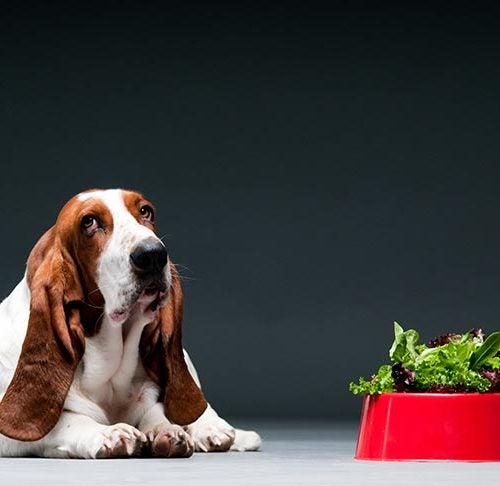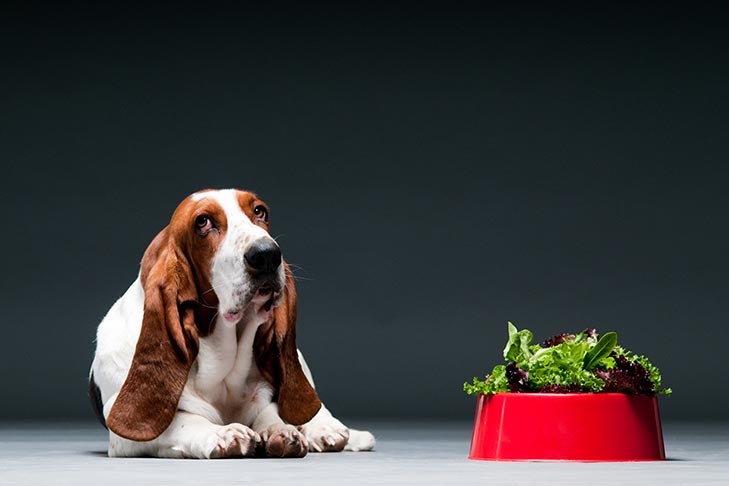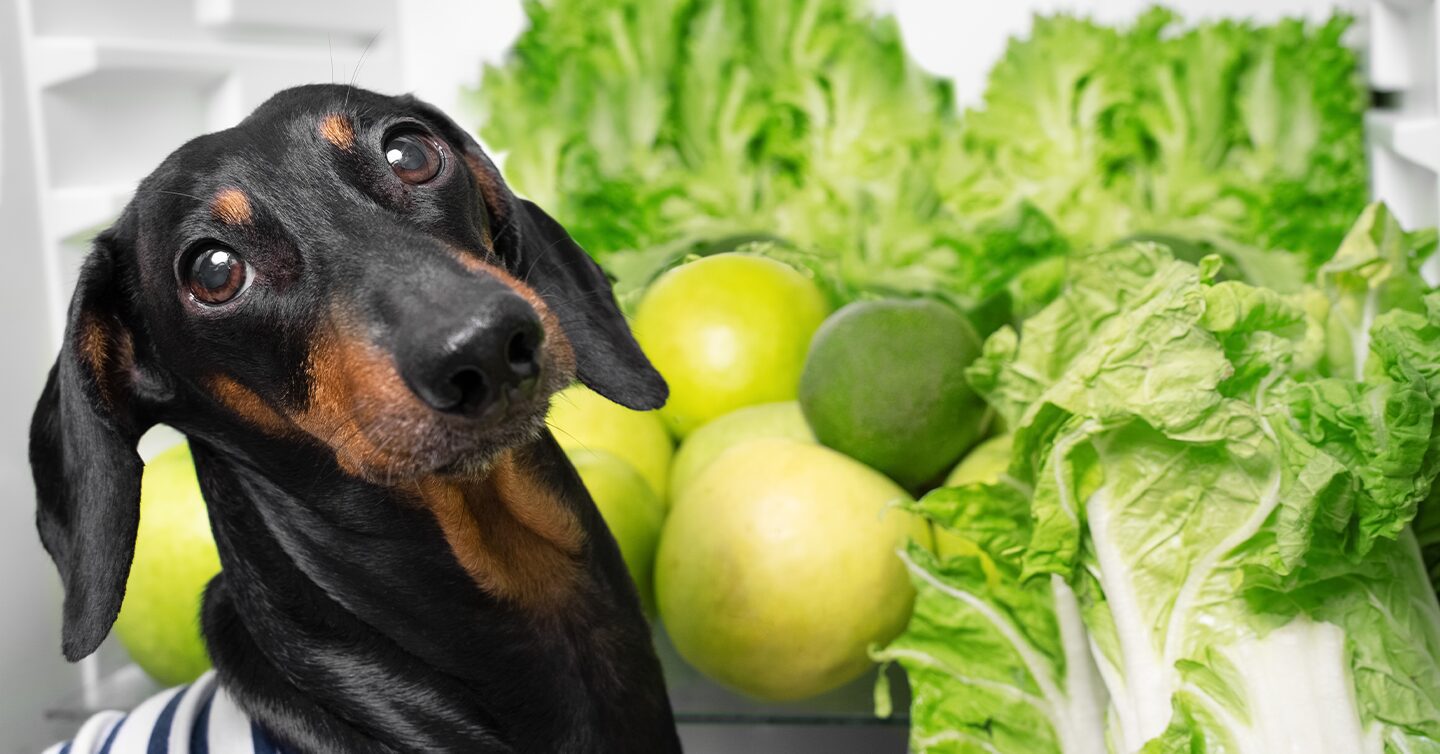
Yes, dogs can eat lettuce. Lettuce is safe and healthy for dogs to consume in moderation.
Lettuce is a popular leafy green vegetable enjoyed by humans worldwide. But have you ever wondered if dogs can eat lettuce, too? The good news is that dogs can enjoy this crunchy and nutritious green delight. While it may not be a staple, feeding dogs lettuce as an occasional treat or addition to their meals can be beneficial.
Lettuce is low in calories, vitamins, and minerals, making it a healthy choice for dogs. However, it’s important to remember that moderation is key when offering lettuce to your furry friend. We will explore the benefits, risks, and proper ways to incorporate lettuce into your dog’s diet, ensuring their health and happiness. So, let’s dive in and discover if dogs can munch on lettuce!
What Is Lettuce?
What is lettuce?
Lettuce is a leafy green vegetable that belongs to the daisy family. It is widely consumed as a salad green and can be found in various dishes worldwide. Lettuce is known for its crisp texture and refreshing taste, making it a popular choice for many individuals. There are different types of lettuce, each with its own unique characteristics and flavours.
Types Of Lettuce
There are several types of lettuce, each offering its own distinct taste and texture.
- Iceberg lettuce: This variety is known for its crunchy and watery leaves. It has a mild flavour and is often used as a base for salads.
- Romaine Lettuce: Romaine lettuce has long, dark green leaves and a slightly bitter taste. It is commonly used in Caesar salads.
- Butterhead Lettuce: Also known as Bibb or Boston lettuce, butterhead lettuce has soft and smooth leaves. It boasts a slightly sweet and buttery flavour.
- Green Leaf Lettuce: Green leaf lettuce has loose, ruffled leaves with a mild flavour. It is often used in sandwiches and wraps.
- Red Leaf Lettuce: Similar to green leaf lettuce, red leaf lettuce has red-tinted leaves and offers a slightly peppery taste.
Nutritional Value Of Lettuce
Lettuce is low in calories and rich in nutrients, making it a healthy addition to your dog’s diet. Some of the essential nutritional benefits of lettuce include the following:
- High in Fiber: Lettuce contains a good amount of dietary fibre, which aids in digestion and promotes bowel regularity.
- Rich in Vitamins and Minerals: Lettuce is an excellent source of vitamins A, C, and K, as well as minerals such as iron and potassium.
- Hydrating Properties: With its high water content, lettuce helps keep your dog hydrated, particularly during hot weather.
- Low in Fat and Cholesterol: Lettuce is soft in fat and cholesterol, making it a suitable option for dogs with weight or cholesterol issues.
While lettuce can provide nutritional benefits to dogs, it is essential to take certain precautions. It is best to gradually introduce lettuce into your dog’s diet and monitor their reaction to digestive issues. Additionally, wash the lettuce thoroughly to remove any pesticides or dirt that could harm your furry friend.

Health Benefits And Risks For Dogs
When it comes to our furry friends, it’s essential to ensure we provide them with a well-balanced and nutritious diet. As pet owners, we often wonder if certain human foods can be safely shared with our dogs. One such food that may come to mind is lettuce. Lettuce is a popular leafy green vegetable packed with vitamins and minerals. This article will explore the health benefits and risks associated with feeding lettuce to dogs.
Health Benefits Of Lettuce For Dogs
Lettuce is known for its low calories and high fibre content, making it a healthy addition to any diet. This applies to our furry friends as well. Here are some of the health benefits that lettuce can provide to dogs:
- Hydration: Lettuce contains a high water content, which can help keep dogs hydrated, especially during hot summer months.
- Vitamins and Minerals: Lettuce is rich in vitamins A, C, and K, as well as folate, iron, and potassium. These nutrients contribute to a robust immune system, healthy bones and teeth, and overall dog vitality.
- Digestive Health: The fibre in lettuce can aid digestion and promote regular bowel movements for dogs.
- Weight Management: Because lettuce is low in calories and fibre, it can be a beneficial treat for dogs trying to maintain a healthy weight.
Risks Of Lettuce For Dogs
While lettuce can offer some health benefits to dogs, it’s essential to know the potential risks associated with feeding this leafy green. Here are a few things you should keep in mind:
- Gastric Upset: Some dogs may have sensitive stomachs and experience diarrhoea or gas if they consume too much lettuce.
- Pesticides: Lettuce, like many other vegetables, may contain pesticide residues, which can harm dogs. It’s essential to thoroughly wash lettuce before serving it to your furry friend.
- Choking Hazard: Lettuce leaves can be a choking hazard for dogs, especially if they are not properly chewed or if a dog tends to swallow whole food. Always cut lettuce into small, manageable pieces before giving it to your dog.
While lettuce can be a healthy addition to a dog’s diet, it should be given in moderation and with caution, considering any individual dietary restrictions or sensitivities your dog may have. As with any new food, it’s always a good idea to consult your veterinarian before introducing lettuce into your dog’s diet.
Best Practices For Feeding Lettuce To Dogs
Wondering if lettuce is safe for your canine companion? Discover the best practices for feeding lettuce to dogs, including the proper preparation and serving size to ensure a healthy treat for your furry friend.
Lettuce is a nutritious and low-calorie vegetable that can make a great addition to your dog’s diet. However, following some best practices when feeding lettuce to your furry friend is essential. Here are some guidelines to ensure you provide your dog with the best possible experience and nutritional benefits.
Preparing Lettuce For Dogs
When it comes to feeding lettuce to dogs, preparation is critical. Make sure to wash the lettuce thoroughly to remove any dirt or pesticides. While dogs can tolerate some pesticides, it’s always best to err on the side of caution. After washing the lettuce, pat it dry with a paper towel or spin it in a salad spinner to remove excess moisture. Chop the lettuce into small, bite-sized pieces to make it easier for your dog to chew and digest.
Recommended Serving Sizes
When feeding lettuce to your dog, it’s important to consider portion sizes. While lettuce is generally safe for dogs to consume, it should only make up a small part of their diet. A good rule of thumb is to feed lettuce to your dog as a treat or a supplement to their regular meals. The serving size will depend on the size and weight of your dog. As a general guideline, small dogs can have around 1-2 tablespoons of lettuce daily, while larger dogs can have up to 1 cup. It’s always best to consult your veterinarian to determine the appropriate serving size for your dog.
Introducing Lettuce To Dogs
Introducing new foods to your dog’s diet should be done gradually to avoid any digestive upset. The same principle applies to lettuce. Start by offering your dog a small piece of lettuce and observe how they react. Some dogs may take to lettuce immediately, while others may need time to adjust to the taste and texture. If your dog enjoys the lettuce and tolerates it well, you can gradually increase the amount over time. However, if you notice any signs of digestive upset, such as vomiting or diarrhoea, it’s best to discontinue feeding lettuce and consult your veterinarian.

:max_bytes(150000):strip_icc()/can-dogs-eat-lettuce-0a23e29b3fa146b5b9fdee65b4626f3f.png)
Frequently Asked Questions For Can Dogs Eat Lettuce?
Can Dogs Eat Lettuce?
Dogs can eat lettuce in moderation. Lettuce is low in calories and provides essential nutrients, but too much can cause digestive issues. It’s best to gradually introduce small amounts of lettuce into your dog’s diet and watch for any adverse reactions.
Always consult with your veterinarian before making any changes to your dog’s diet.
Conclusion
To sum up, dogs can indeed eat lettuce, as it offers a range of health benefits like hydration and fibre content. However, it is crucial to introduce it gradually into their diet and monitor their response. Not all dogs may tolerate lettuce well, so consulting with a veterinarian is advisable.
They prioritize their meals’ overall balance and diversity to ensure their well-being.
